Tribe Sicyeae Scientific name Echinocystis Rank Genus | Subtribe Cyclantherinae Higher classification Cucurbits | |
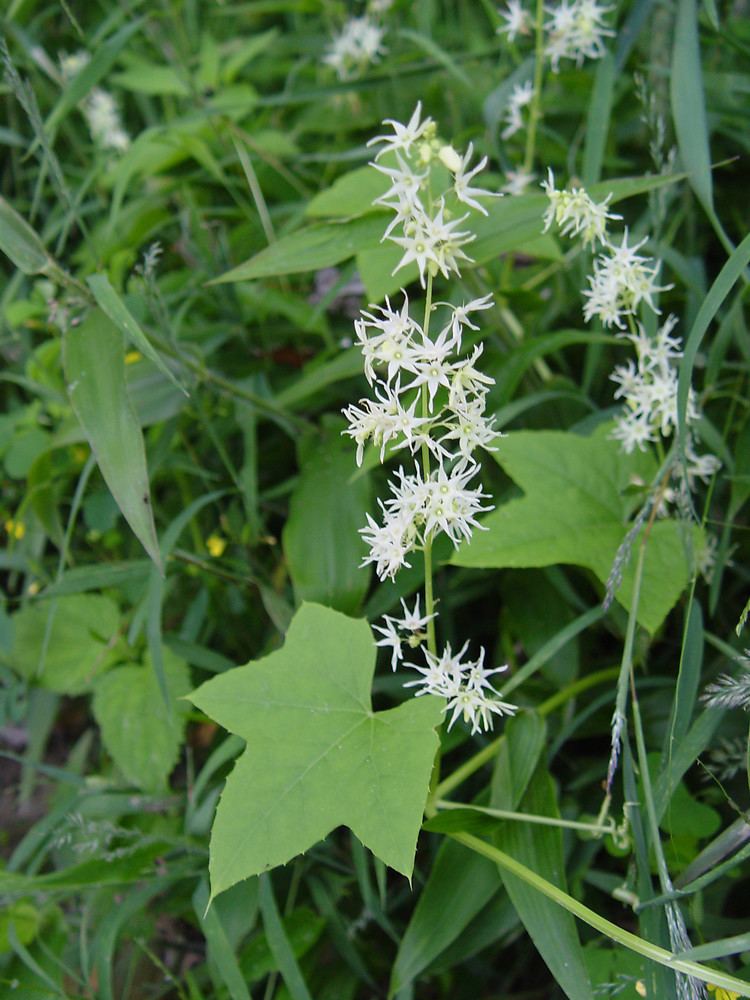 | ||
Similar Marah, Cucurbits, Sicyos, Ecballium, Cyclanthera | ||
Wild cucumber echinocystis lobata
Echinocystis is a monotypic genus in the gourd family, Cucurbitaceae. The sole species is E. lobata, commonly called wild cucumber, prickly cucumber, or balsam apple. It is an annual, sprawling plant that is native to North America.
Contents
- Wild cucumber echinocystis lobata
- Description
- Distribution
- Insect interactions
- Bacterial infection
- Uses
- References
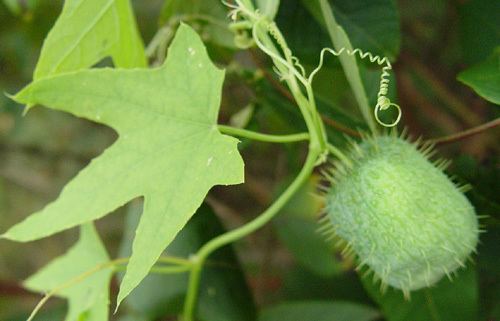
Description
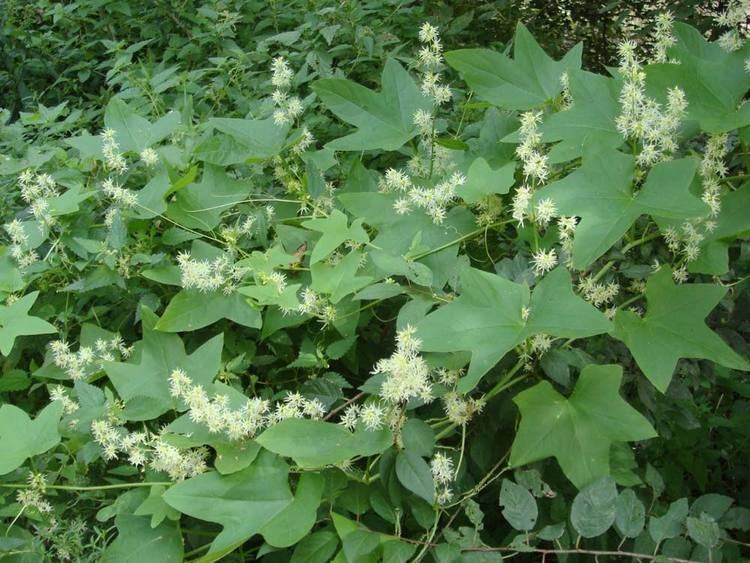
Echinocystis lobata is an annual vine that produces stems that can be as long as 8 m (26 ft) and which climb, with the help of coiling, branched tendrils, over shrubs and fences or trail across the ground. The stems are angular and furrowed. The leaves are alternate with long petioles, five palmate lobes and no stipules. The flowers are monoecious, with separate male and female blooms on the same plant. The male flowers are in long-stemmed, upright panicles. Each flower has a white, or greenish-yellow, corolla with six slender lobes. The male flower has a single central stamen with a yellow anther. The female flower has a single stigma and is borne on a short stalk at the base of the flower panicle, with the spiky globular inferior ovary being immediately beneath. The fruit is a prickly, inflated capsule up to 5 cm (2 in) long with two pores and four seeds. It resembles a tiny spiny water melon, persists all winter and then opens at the bottom, liberating the seeds. This species can be distinguished from the oneseed bur cucumber (Sicyos angulatus) by the six-lobed corolla and the lack of the clustered fruits that that plant bears.
Distribution
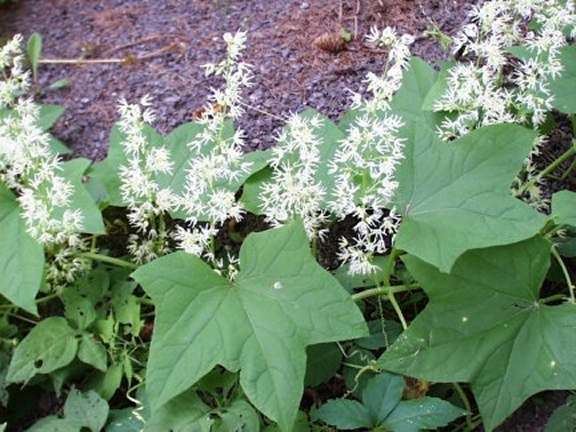
The native range across North America includes forty U.S. states (excluding Nevada, Hawaii, and Alaska; and most of the far Southeastern states); and nine Canadian provinces. It has also been reported as an uncommon invasive species in the Örség Landscape Protection Area of Hungary near the Austrian-Slovenian border. Similarly it is reported as an adventive alien species that grew in wetland, grassland and human effected areas of the Carei Plain natural protected area, western Romania.
Insect interactions

This vine has been reported as a food source and host plant for the leaf-footed bug Anasa repetita, which feeds along the entire length of the stem and at the developing roots. Specimens collected in September 2006 from a E. lobata in Grant County, Wisconsin were the first recording of the bug in that state. Additionally, the pentatomid species Euschistus servus euschistoides is recorded as feeding on developing E. lobata fruit. Robertson in 1928 reported that 2 different species of parasitoid hymenopterans had been collected from E. lobata flowers in central Illinois. Both the scoliid wasp Scolia bicincta and the tiphid wasp Myzinum quinquecinctum nectared on the flowers, along with a number of other flower species. The beetle species Chauliognathus pensylvanicus is listed as visiting the wild flowers growing in Wisonsin.
Bacterial infection
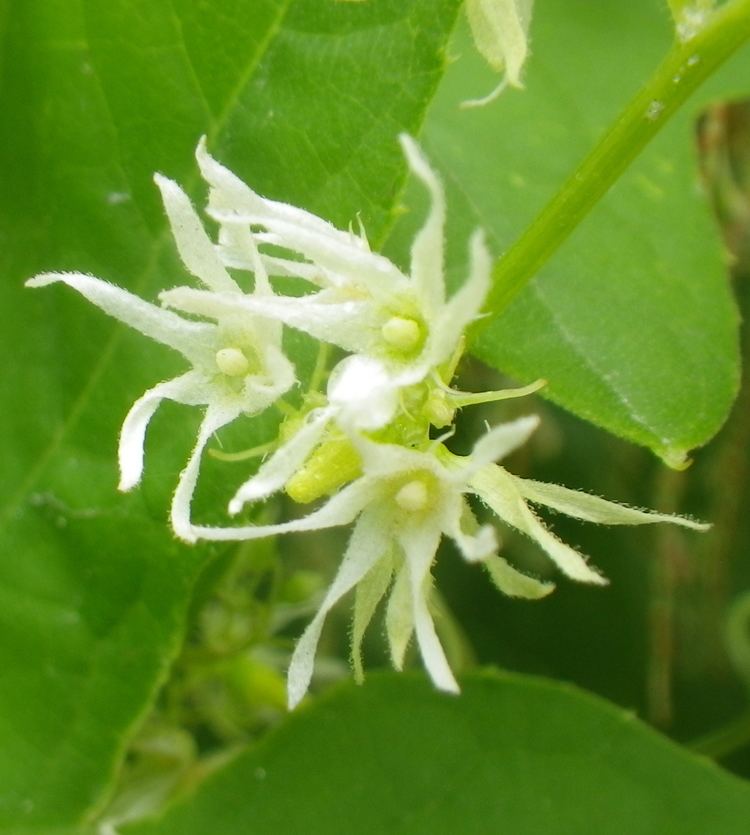
E. lobata has been shown to be susceptible to bacterial wilt, a disease caused by infection of the plants with the bacteria Erwinia tracheiphila. The bacteria is transmitted between plants by the Striped cucumber beetle Acalymma vittatum. As the adult beetles feed they also drop frass on fresh areas of feeding which results in infection of the plant. The susceptibility of E. lobata, Cucurbita foetidissima, Cucurbita californica and Sicyos angulatus to bacterial wilt was identified via experiments by E. M. Smith in 1911.
Uses
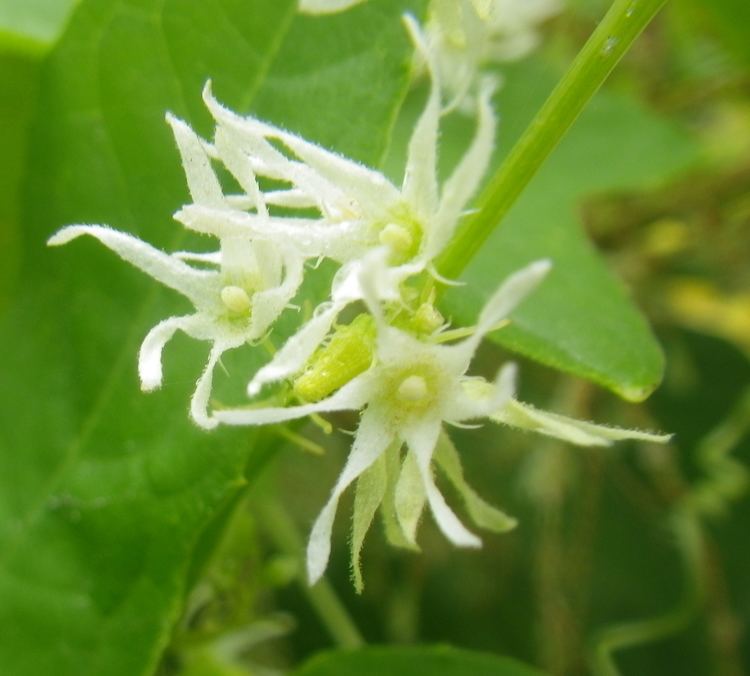
The plant has been used medicinally by native Americans. The Taos Pueblo of New Mexico used it to treat rheumatism, while the Menominee of Wisconsin made a bitter extract from the roots for use as a love potion and as an analgesic. The powdered root has been used to prepare a poultice to relieve headaches and the seeds have been used as beads.
